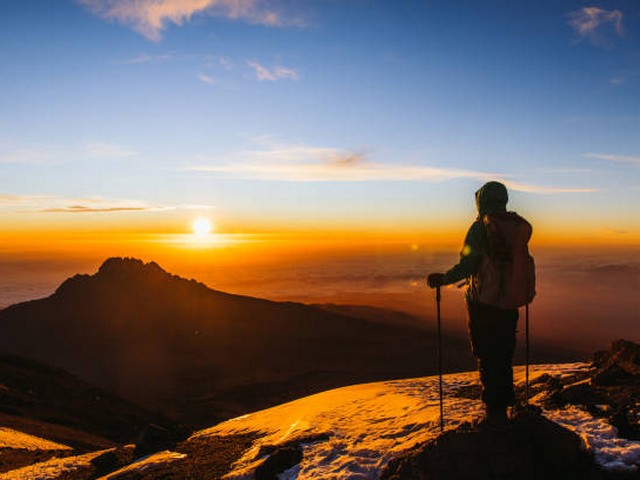Kilimanjaro Trekking Photos: Dos and Don’ts
Capturing the Majesty of Mount Kilimanjaro: A Photographer’s Guide
Ascending the slopes of Mount Kilimanjaro, the roof of Africa, is not just a trek; it’s a journey through some of the most breathtaking landscapes on the planet. Each step offers a new panorama, a fresh perspective on beauty, and an opportunity to capture memories that last a lifetime. However, photographing such majesty comes with its own set of challenges and responsibilities. At the Kilimanjaro Centre for Trekking and Ecotourism (KCTE), we understand the allure of capturing this iconic mountain in photographs, and we’re here to guide you through the dos and don’ts to ensure your Kilimanjaro trekking photos do justice to its grandeur, while respecting the natural and cultural sanctity of this magnificent place.
The Art of Kilimanjaro Photography: Dos
Do: Understand Your Equipment
Before you even set foot on the mountain, familiarize yourself with your camera. Whether it’s a high-end DSLR, a compact digital camera, or your smartphone, knowing how to adjust the settings for landscape, portrait, and low-light conditions will make all the difference. Battery life depletes faster in cold conditions, so carry spares and keep them warm close to your body.
Do: Respect the Environment
Mount Kilimanjaro is not just a photogenic giant but also a fragile ecosystem. Practice “Leave No Trace” principles: pack out what you pack in, stay on designated trails, and avoid disturbing the wildlife. When you take photos, use natural light and perspectives to your advantage without harming the environment.
Do: Capture the Human Element
While the mountain itself is stunning, the stories of those who climb it are equally captivating. With permission, photograph the smiles and struggles of your fellow trekkers and the dedicated porters who make the journey possible. These portraits often carry the emotional weight of the trek.
Do: Utilize the Golden Hours
The golden hours—shortly after sunrise and before sunset—offer the best light for dramatic landscapes and soft, diffused portraits. Plan to capture the vastness of the mountain and the surrounding plains during these times for the most striking effects.
The Pitfalls: Don’ts
Don’t: Ignore Local Customs
Photography is a powerful tool that should be used with sensitivity, especially when it involves local communities and sacred sites. Always ask for permission before taking photos of people, including local tribes and climbers. Be aware of areas where photography might be frowned upon or outright forbidden.
Don’t: Sacrifice Safety for the Perfect Shot
Kilimanjaro’s terrain can be tricky, and weather conditions change rapidly. Never venture off the safe path or delay your group for photos. Always prioritize safety over getting the perfect shot.
Don’t: Rely Only on Your Camera
While it’s tempting to view the entire trek through your lens, remember to take moments to absorb the scenery and experience the climb fully without the camera. These personal memories are as valuable as the photographs you take home.
Don’t: Forget to Back Up Your Photos
There is nothing more heartbreaking than losing all your photos due to a technical mishap. Backup your photos daily if possible, either by using portable hard drives or cloud storage solutions.
Making Your Kilimanjaro Photo Journey Unforgettable
Capturing Kilimanjaro is as much about the experience as it is about the technical aspects of photography. At KCTE, we provide guided treks that not only respect the mountain’s ecological and cultural integrity but also offer ample opportunities for you to take home awe-inspiring photographs. Our experienced guides know the most photogenic spots and the times when the light is just right for your shots.
Join Us at KCTE for an Inspirational Trek!
Ready to take on the adventure of a lifetime and come back with a portfolio of stunning Kilimanjaro trekking photos? Book your climb with Kilimanjaro Centre for Trekking and Ecotourism (KCTE). We are committed to providing you with a journey that is as safe as it is visually rewarding.
FAQs: Capturing Kilimanjaro
What is the best time of year to take photos on Kilimanjaro?
The best times for photography on Kilimanjaro are during the dry seasons, from late June to October and from late December to early March, when skies are clearer and the visibility is better.
Can I fly a drone to take photos or videos on Mount Kilimanjaro?
Drones are not allowed without special permissions from the Tanzanian authorities. This regulation helps protect the wildlife and privacy of the climbers.
What kind of camera gear should I bring for Kilimanjaro trekking photos?
A good quality DSLR or mirrorless camera with a versatile zoom lens (like 24-70mm) is ideal. Also, consider a lighter, backup camera such as a high-quality smartphone or compact camera.
How can I ensure my camera batteries last during the trek?
Keep your batteries warm by storing them in your jacket pocket close to your body. Also, bringing multiple backup batteries is advised, as cold weather can drain battery life quickly.
Whether you are a novice looking to capture your adventure or a seasoned photographer aiming for the ultimate shot, trekking Kilimanjaro offers a unique blend of challenges and rewards. Remember, the journey to the summit is fleeting, but the memories and images you capture will inspire you and others for a lifetime. Let us at KCTE help make your photographic journey on Kilimanjaro as magical as the mountain itself. Join us and experience the difference with KCTE!




